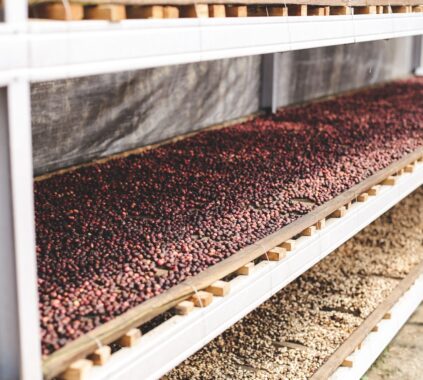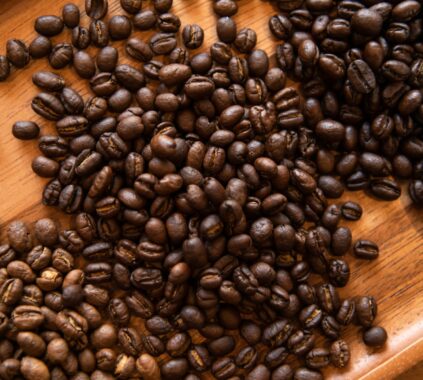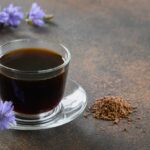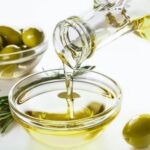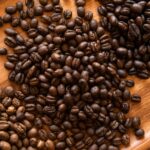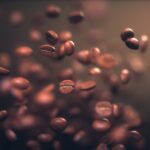There’s no denying the power of a freshly brewed cup of coffee to kickstart your day. With its rich aroma and energizing taste, coffee has become an essential part of our morning routine for many of us. But have you ever wondered about the science that goes into brewing the perfect cup? In this article, we’ll explore “The Science Behind Coffee: How Chemistry Affects Your Morning Brew” and unveil the secrets that make each cup of coffee a unique experience. So, grab a cup of your favorite blend and join us on this caffeinated journey!
Table of Contents
The Complex Chemistry of Coffee Beans
The Magical Bean: From Seed to Roast
Coffee’s journey begins as a small seed inside the fruit of the Coffea plant. As the seed develops, it accumulates a variety of compounds, including carbohydrates, proteins, lipids, and other organic molecules. These compounds play a crucial role in shaping the flavor and aroma of the final brewed coffee.
Roasting coffee beans is a critical step in the process, as it transforms the green beans into the aromatic, dark brown beans we know and love. During roasting, chemical reactions like the Maillard reaction, caramelization, and pyrolysis occur, breaking down and rearranging the bean’s compounds. This creates new flavor and aroma compounds, known as volatile organic compounds (VOCs), that make coffee so enticing.
Coffee’s Key Chemical Components
- Caffeine: The stimulant responsible for coffee’s energy-boosting effects. Caffeine blocks adenosine receptors in the brain, reducing feelings of drowsiness and increasing alertness.
- Chlorogenic acids: A group of antioxidant compounds that contribute to coffee’s bitterness and astringency. These compounds can also influence the perception of sweetness and acidity.
- Lipids: Fatty acids, esters, and other molecules that contribute to coffee’s mouthfeel and body. Some lipids also play a role in coffee’s aroma and flavor development.
- Volatile organic compounds (VOCs): A diverse group of compounds, such as aldehydes, ketones, and esters, responsible for coffee’s unique aroma and flavor. Over 800 VOCs have been identified in coffee!
Brewing Science: How Extraction Influences Your Morning Brew
The Art of Coffee Extraction
The Science Behind Coffee: How Chemistry Affects Your Morning Brew is also evident during the brewing process. Coffee extraction is the process of dissolving desirable compounds from ground coffee beans into water. This delicate balance determines the overall taste, aroma, and strength of your cup.
Key factors influencing extraction include:
- Grind size: Finer grinds increase the surface area, allowing for faster extraction and potentially over-extracting the coffee.
- Water temperature: Higher temperatures increase the solubility of coffee compounds, accelerating extraction.
- Brewing time: Longer brewing times can lead to over-extraction, resulting in a bitter and astringent cup.
The Ideal Extraction Ratio
A well-extracted coffee balances the right amount of desirable compounds without over-extracting. The widely accepted extraction ratio, known as the “Golden Ratio,” is approximately 18-22% of the total coffee ground’s weight. Achieving this balance requires precise control of grind size, water temperature, and brewing time.
Coffee Aromas: The Science Behind the Alluring Scents
The Bouquet of Coffee’s Volatile Compounds
The alluring scents of coffee are the result of an intricate symphony of volatile organic compounds (VOCs) that are released during the roasting and brewing processes. These VOCs, including aldehydes, ketones, esters, and furans, interact with our olfactory receptors, creating the distinctive aromas we associate with coffee.
Aroma Categories and Their Origins
Coffee aromas can be classified into several categories, each linked to specific compounds and their origins:
- Floral and fruity: These pleasant scents are derived from esters, terpenes, and other VOCs formed during bean development and roasting.
- Nutty and spicy: Pyrazines and pyrroles contribute to these warm, comforting notes, resulting from Maillard reactions during roasting.
- Caramel and chocolatey: The sweet aromas of caramelization and the Maillard reaction yield these delicious scents, associated with sugars and amino acids reacting at high temperatures.
- Earthy and woody: These complex, grounding aromas come from various VOCs, such as furans and guaiacol, that develop during the roasting process.
Exploring Acidity: A Key Element in Coffee’s Flavor Profile
The Bright Side of Coffee Chemistry
Acidity plays a vital role in the flavor profile of your morning brew, contributing to its brightness and liveliness. The Science Behind Coffee: How Chemistry Affects Your Morning Brew is especially evident in the balance of acids that impact the taste.
The primary acids found in coffee include:
- Citric acid: Provides bright, citrusy notes and is more prominent in Arabica beans.
- Malic acid: Contributes fruity, apple-like flavors and is also more abundant in Arabica beans.
- Acetic acid: Imparts a subtle tanginess, and its presence can indicate the quality of the coffee bean processing.
- Quinic acid: Offers a mild, bitter taste and is responsible for coffee’s astringent mouthfeel.
The Impact of Altitude on Acidity
Higher altitude coffee beans generally exhibit more acidity, thanks to slower maturation rates and denser beans. This slower development allows for a greater accumulation of organic acids, resulting in brighter, more complex flavors.
FAQs About the Science Behind Coffee: How Chemistry Affects Your Morning Brew
How does the coffee roasting process affect the flavor profile?
Roasting coffee beans leads to a series of chemical reactions that produce new flavor and aroma compounds. Darker roasts typically have bolder, more intense flavors, while lighter roasts exhibit brighter, more acidic notes.
Why does grind size matter when brewing coffee?
Grind size affects the extraction rate, with finer grinds increasing surface area and allowing for faster extraction. This can lead to over-extraction and a more bitter, astringent taste if not correctly balanced with brewing time and water temperature.
What causes the aroma of coffee?
The aroma of coffee comes from a complex mixture of volatile organic compounds (VOCs) released during the roasting and brewing processes. These VOCs interact with our olfactory receptors to create the enticing scents we associate with coffee.
Chemistry?
The Science Behind Coffee: How Chemistry Affects Your Morning Brew reveals a fascinating world of complex chemical reactions, volatile compounds, and delicate balances. From the humble coffee bean’s development to the intricacies of brewing, every step is a dance of chemistry that culminates in the unique, aromatic, and flavorful experience of each cup. As you sip your morning brew, take a moment to appreciate the remarkable science that went into creating it – and perhaps even experiment with your brewing techniques to perfect your own personalized coffee experience. Understanding the chemistry behind coffee not only enhances our appreciation for this beloved beverage but also empowers us to explore new flavors, aromas, and combinations. So, raise your mug to the fascinating world of coffee chemistry and let it fuel your curiosity and creativity as you dive deeper into the art and science of your favorite morning brew!
Daily Demitasse is a participant in the Amazon Services LLC Associates Program, an affiliate advertising program designed to provide a means for sites to earn advertising fees by advertising and linking to Amazon.com. We also participate in other affiliate programs which compensate us for referring traffic.




